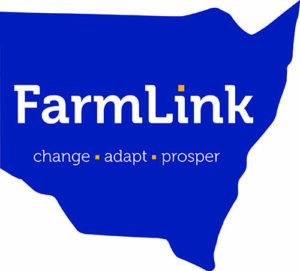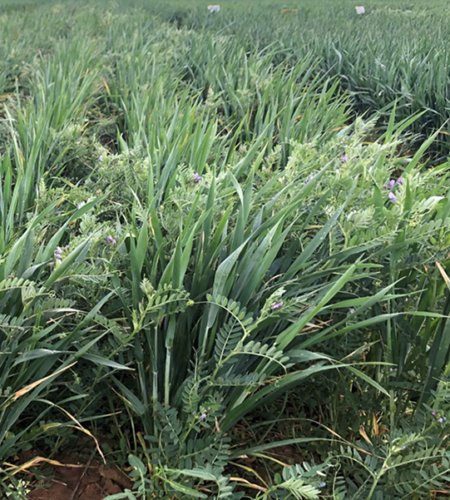This fact sheet supports the ‘Opportunities for soil carbon management in the Riverina region of NSW’ webinar, delivered as part of the ‘Soil carbon capacity building resources for farmers and advisors’ project, proudly supported by the NSW Department of Climate Change, Energy, the Environment and Water (DCCEEW).
In this webinar Dr Abe Gibson, Soil Scientist and Research Fellow (Southern Cross University) and Dr Cassandra Schefe, Soil Scientist (AgriSci) explore:
- what soil carbon levels can be expected in the region
- what factors influence soil carbon and
- what management practices can be used to increase soil carbon levels.
The focus of this webinar is the Riverina region of southern NSW where the FarmLink group operates.
Key take home messages
- Growing the best possible plant through managing soil constraints and fertility is the optimal method to build soil carbon and organic matter. Ensure carbon building success by managing constraints like soil acidity, sodicity, salinity, compaction, waterlogging/drainage and nutritional deficiencies or toxicities.
- Most soil carbon is derived from the capture of atmospheric carbon dioxide into plants, converted into plant material. Plant residues decompose and become organic matter, which includes soil carbon.
- Monitor soil pH – soil acidity is generally the most limiting factor in plant growth in highly productive farming systems.
- 1,612 soil samples in southern NSW cropping soils demonstrated that soils with high soil carbon = good pH status + legume history + good yields (Cool Soil Initiative). The range of soil carbon values in the Riverina region is 0.55 to 4.9% – higher values can be achieved.
- Building carbon in summer cover crop, intercropping and temporary intercropping systems is likely to be a decadal process without a step change in biomass production, such as inclusion of a pasture phase.
Factors that affect potential soil carbon values
Rainfall: A key driver of soil carbon is rainfall, as rainfall dictates plant growth. In high rainfall years, there is greater plant growth, resulting in increased biomass, which can be transformed into organic matter. In low rainfall or drought years, the lack of biomass inputs results in depletion of organic matter and soil carbon. However, dry conditions result in lower microbial respiration of ‘old’ soil organic carbon, so dry conditions can preserve soil organic carbon.
Temperature: Warmer temperatures can accelerate plant growth but also the decomposition of organic matter, leading to a faster release of carbon dioxide (CO₂) back into the atmosphere. Conversely, cooler temperatures slow down decomposition, allowing more carbon to be stored in the soil.
Extreme weather events: droughts and floods may remove ground cover and disrupt soil structure, leading to the loss of soil carbon.
Soil type and condition:
- Clay soil is able to hold more carbon due to a range of mechanisms by which clay prevents microbial and non-microbial breakdown of organic carbon.
- Low pH soils may build less carbon, due to impaired microbial function and plant growth due to nutrient toxicity or unavailability.
- Crusted, dispersive or compacted soils will require amelioration to build more soil carbon.
- Address key limitations to plant growth before focussing on soil carbon accrual.
- Each soil has a threshold carbon capacity – not an ongoing linear increase.
Managing constraints for carbon success
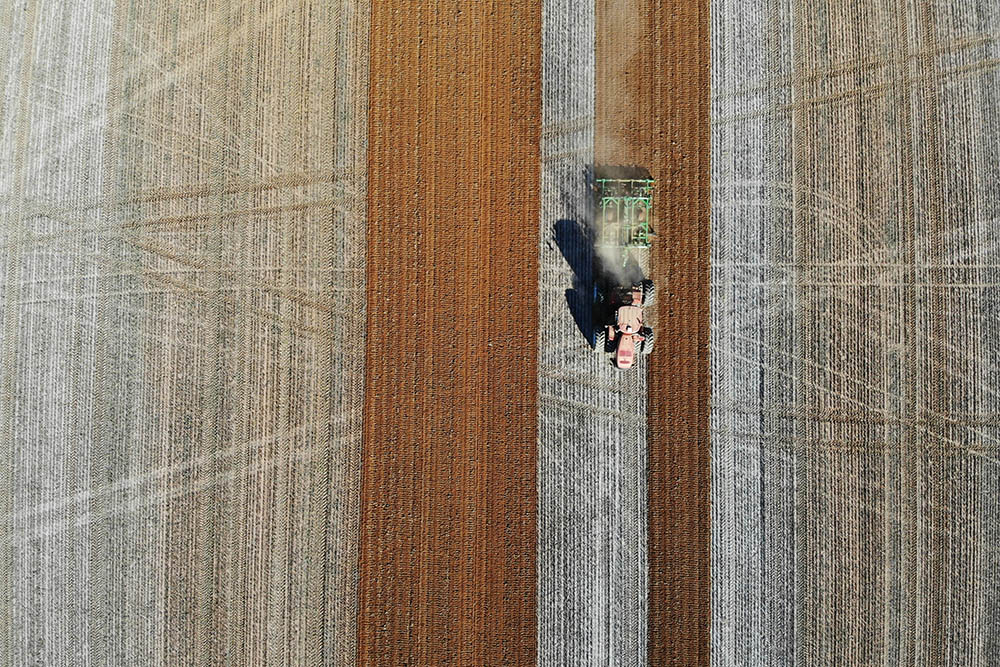
Soil pH – soil acidity is generally the most limiting factor in plant growth in productive farming systems in the Riverina region of NSW:
- Aluminium toxicity occurs in soils which contain aluminium and are strongly acidic (pH <5). Likely soil types with aluminium include ironstone rich soil and soil with the dominant clay mineral kaolinite. Generally, correcting soil acidity will alleviate toxicity symptoms. Tolerance to aluminium varies amongst plant species (Table 1).
- Reduced nutrient availability and plant response to applied nutrients.
- Reduced microbial function.
- Poor rhizobium inoculation of legumes, poor persistence of lucerne stands.
Table 1. Plant tolerance to aluminium ranges
| Tolerance | Species | Critical Values Aluminium |
|---|---|---|
| Highly sensitive | Lucerne, barley, medics and canola | <5 mg/kg |
| Sensitive | Red clover, sensitive wheat, phalaris | 5-10 mg/kg |
| Moderately tolerant | Rose clover, tolerant wheat, ryegrass, vetch | 10-20 mg/kg |
| Highly tolerant | Lupins, oats, triticale, sugarcane | 20-30 mg/kg |
Source: Adapted from Peverill, K.I., Sparrow, L.A., & Reuter, D.J. (1999). Soil Analysis: An Interpretation Manual.
Soil pH can be increased through liming. Test soil to determine requirements and to ensure other soil conditions are not limiting plant growth such as:
- Soil sodicity – may occur through the region, resulting in poor soil structure, water infiltration and plant establishment.
- Salinity – decreases the ability of the plant to take up soil water, resulting in poor vigour and persistence of preferred species.
- Compaction – reduces the ability of plant roots to penetrate the soil to access water and nutrients.
- Waterlogging/drainage – reduces oxygen availability to roots and microbes, shutting down plant growth and microbial function (g. nitrification).
- Nutritional deficiencies/toxicities – will reduce plant vigour and competitiveness.
Management practices that contribute to soil carbon
Biomass input
- Legume-based pastures and pulses (biomass and organic nitrogen)
- Crop residues
- Groundcover management.
Soil constraint amelioration (e.g. liming) = growing the best plant possible.
Soil fertility – apply adequate nutrients to meet plant yield targets:
- Cannot maintain or grow soil carbon without adequate nutrients to meet plant growth needs.
- 1,600 soil samples in southern NSW cropping soils demonstrated that soils with high soil carbon = good pH status (pH >5) + legume history + good yields (Cool Soil Initiative).
- The range of soil carbon values in the Riverina region is 0.55 – 4.9% – higher values can be achieved.
Optimising plant growth and microbial function increases the ability to hold and build carbon through greater organic matter input and cycling.
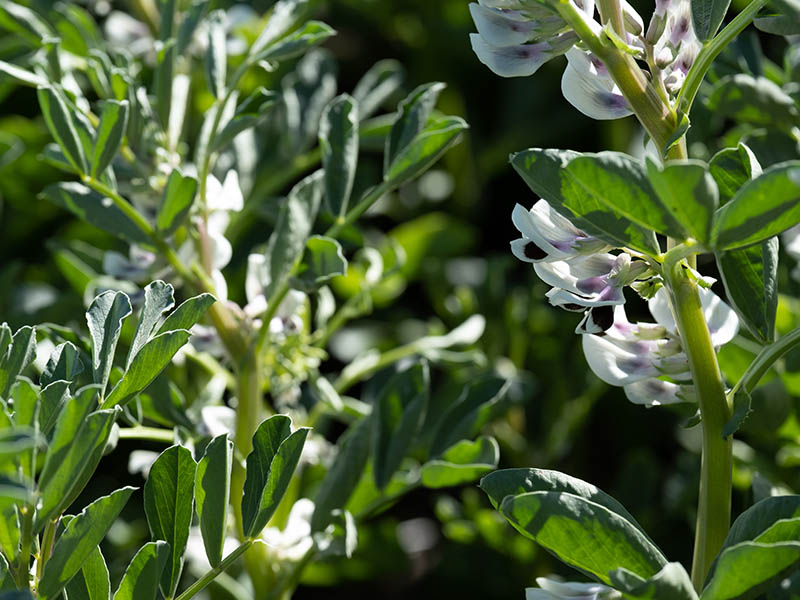
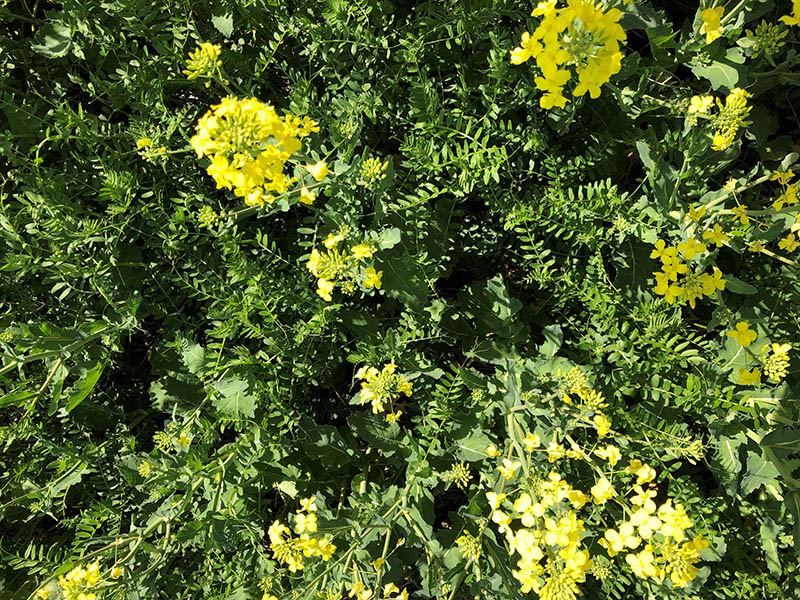
Regional plant diversity research on soil carbon
A Soil CRC project in Central West/Southern NSW, ‘Plant-based solutions to improve soil performance’, trialled a range of summer cover crop, intercropping and temporary intercropping treatments that were monitored for biomass production and grain yield, soil water use, soil health and changes in soil organic carbon.
Trial results indicate that building soil carbon using these summer cover crop, intercropping and temporary intercropping treatments will be a slow process. While an increase in total soil carbon has not been measured from the research, there has been a positive response in early soil health indicators and reduced disease loads in the diverse systems trialled. Integrating summer cover crop, intercropping and temporary intercropping treatments should be considered as part of a planned rotation.
Summary
- Building and maintaining soil carbon is an important issue in cropping systems.
- Additional biomass, managing soil constraints and system fertility are the key building blocks for carbon.
- Building carbon in summer cover crop, intercropping and temporary intercropping systems is likely to be a decadal process without a step change in biomass production, such as inclusion of a pasture phase.
- Practices that sequester carbon or promote soil health are important to demonstrate environmental stewardship. Demonstrating this stewardship will become increasingly important for maintaining market access into the future.

Prepared by the Soil CRC and their participants as part of the ‘Soil Carbon Capacity Building Resources for Farmers and Advisors’ project, proudly supported by NSW DCCEEW.
